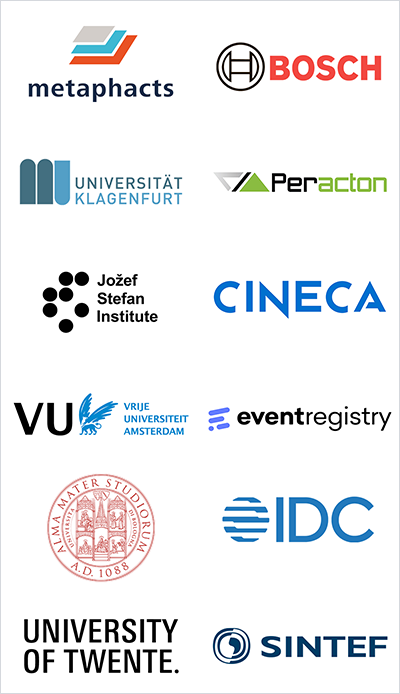Graphs are widely used to model complex systems such as social networks, transportation networks, and biological systems. However, as the size of these graphs grows, processing and analyzing them becomes increasingly challenging. This is where Graph-Massivizer comes in. This research project aims to develop algorithms that can efficiently handle massive graphs with billions of vertices and edges. Ultimately, this will support a climate-neutral and sustainable economy based on graph data.
Software toolkit & commercialization goals
The Graph-Massivizer project consortium will develop innovative products, particularly for use cases that can be commercialized after the project ends. These products will be based on a software platform consisting of five integrated tools for extreme data processing that will:
- translate extreme data streams or follows heuristics to generate synthetic data and persist it within a graph structure.
- use probabilistic reasoning and AI algorithms for graph pattern discovery, low-footprint graph generation, and low latency error-bounded queries.
- help co-design the most promising processing infrastructure with guaranteed performance and energy consumption estimates for specific workloads.
- use operational data centres and national energy supplier data to simulate sustainability profiles for operating graph workload analytics at scale.
- use the performance and sustainability models to deploy and orchestrate the graph analytics workloads on the computing continuum.
Furthermore, the project consortium aims to create an integrated platform that is user-friendly and easy to deploy in enterprise environments, using the metaphactory knowledge graph platform as a basis. The platform will tightly integrate the tools developed by Graph-Massivizer to provide a comprehensive offering.
Use cases validation in finance, environment protection, manufacturing, and high-performance computing sectors
To ensure applicability and scalability in real-world scenarios and the feasibility of commercial solutions developed on top of metaphactory as a result of the Graph-Massivizer project, the project partners will validate the innovative toolkit on four use cases that cover the economic, societal and environmental sustainability pillars:
- sustainable green finance,
- global environment protection foresight,
- green artificial intelligence (AI) for the sustainable automotive industry, and
- data centre digital twin for exascale computing.
These use cases tackle extreme data processing and massive graph analytics challenges and are, therefore, a perfect fit for the Graph-Massivizer toolkit.
Across these use cases, Graph-Massivizer aims to improve analytics efficiency by 70% and energy awareness for extract-transform-load (ETL) storage operations by 30%. Furthermore, it aims to demonstrate a possible two-fold improvement in data centre energy efficiency and over 25% lower greenhouse gas (GHG) emissions for basic graph operations.
Consortium & funding
Led by the University of Klagenfurt and composed of 12 partners from 8 EU countries, the project brings together the world-leading roles of European researchers in graph processing and serverless computing and uses leadership-class European infrastructure in the computing continuum.
The project is funded by 'Horizon Europe', the European Union’s key funding programme for research and innovation. Among many other R&D topics, Horizon Europe tackles climate change and helps to achieve the UN’s Sustainable Development Goals. It also aims at boosting the EU’s competitiveness and growth.



















